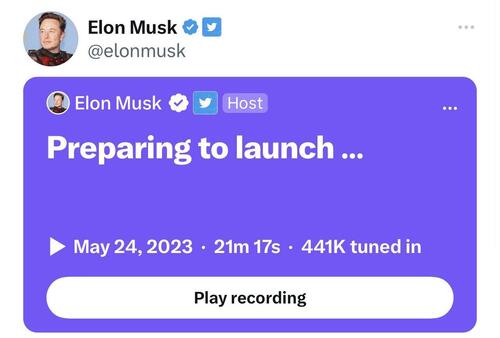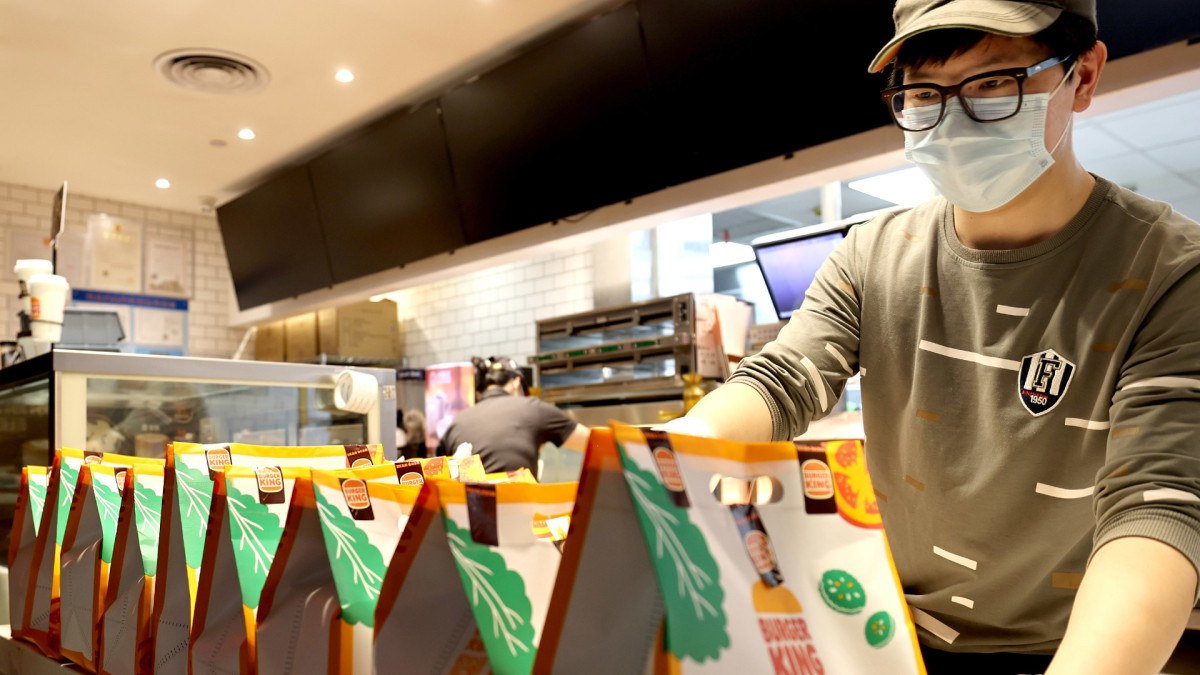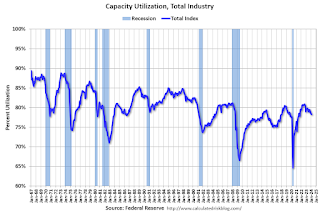Uncategorized
Despite Glitchy Start, DeSantis’ Twitter Spaces Launch Showed Why He’s A Contender
Despite Glitchy Start, DeSantis’ Twitter Spaces Launch Showed Why He’s A Contender
The Ron DeSantis 2024 presidential campaign got off to…

The Ron DeSantis 2024 presidential campaign got off to a terrible start on Wednesday night, as Twitter glitched under the weight of traffic (though admittedly once Musk transitioned the hosting role from his 140mm follower account to David Sacks's account, the discussion was flawless and fascinating.)
Slated to start at 6pm ET, what promised to be an edgy, modern launch -- using Twitter's interactive, live-audio "Spaces" feature - quickly turned into a painstaking embarrassment for both DeSantis and his host, Twitter owner Elon Musk.
Over a half-hour span, users were booted off the chat and others had to endure feedback noise and hot-mic whispering until the event finally got underway around 6:30, when DeSantis declared, “I am running for president of the United States to lead our great American comeback.”
The Twitter audience wasn't the only one that was kept waiting, according to The New York Times:
The DeSantis campaign had invited prominent donors to Miami on Wednesday for a fund-raising event, hosting them at a conference space at the Four Seasons as the Twitter discussion was projected onto a large screen. Then they waited. And waited.
Trying to make lemonade out of lemons, the DeSantis campaign tweeted, "It seems we broke the internet with so much excitement. While you’re waiting, donate NOW.”
Social media naturally had a field day, with the hashtag #DeSaster trending on Twitter well into the night.
Failure to Launch Crashed #DeSaster pic.twitter.com/DYDGkM3NNB
— David Wolf (@DavidWolf777) May 24, 2023
To fix the foul-up, the event was moved from Musk's Twitter account to that of tech investor and Musk associate David Sacks.
There's “just a massive number of people online, so the servers are straining somewhat,” said Musk during the early minutes.
"My account was breaking the system," he said later.
I’m sure Presidential candidates are running over to Twitter Spaces right now after seeing the #DeSaster that just happened pic.twitter.com/CRVDF40VDX
— Wu Tang is for the Children (@WUTangKids) May 25, 2023
While the audience initially slowed in terms of constant traffic, Musk retweeted a note showing that over 3 million people tuned in at some point to the discussion.
“Glitchy. Tech issues. Uncomfortable silences. A complete failure to launch. And that’s just the candidate!” said Steven Cheung, a spokesman for GOP frontrunner Donald Trump. The Biden campaign also tried to exploit the fiasco, tweeting "this link works" and pointing users to the Biden-Harris donation page.
Who did this? ????????????#DeSaster pic.twitter.com/Klpc3aIvJM
— ????????????™????????️???????????????????? (@Lady_Star_Gem) May 25, 2023
The Trump meme-team was on fire...
Trump just posted this video making fun of DeSantis. I have to admit, I couldn't stop laughing????
— Mario Nawfal (@MarioNawfal) May 25, 2023
Trump spaces soon? pic.twitter.com/xDsWMTUBI3
Putting a favorable spin on things, Sacks said, “We started with some technical issues because of the sheer scale and unprecedented nature of what we were doing. It’s not how you start, it’s how you finish, and I think this finished really strong.”
Musk had an alternative view also...
I call it “massive attention”
— Elon Musk (@elonmusk) May 25, 2023
Top story on Earth today
????
— Elon Musk (@elonmusk) May 25, 2023
In his remarks, DeSantis didn't say Trump's name, but did draw contrasts indirectly, such as when he said, "We must look forward, not backwards.” In the three most recent national GOP primary polls -- from Fox News, Quinnipiac and CNN -- Trump leads DeSantis by margins of 33%, 31% and 27% respectively.
Interesting
— Elon Musk (@elonmusk) May 25, 2023
It's early, though, and DeSantis has a large campaign coffer, and had a very fruitful swing through Iowa earlier this month, racking up the endorsements of more than three dozen Republican state legislators -- which is more than a third of the total in the state. His endorsement tally there is already more than triple the highest count for any 2016 contender. Then again, the 2016 Iowa endorsement leader was Ted Cruz, and we know how things turned out for him.
Mockery aside, DeSantis performance was strong as he laid out the reasons why he can win the Republican presidential nomination over Donald Trump because he’s broadly acceptable to Republicans, adding that he will then beat Joe Biden in the general election because he has the proven strength to appeal to independents.
“We are acceptable to the broad swath. It’s not like I’m taking policy positions that are alienating massive segments of Republicans. And so people are going to see somebody who’s got a proven record of success, who’s representing the values that the vast, vast majority of our party professes to hold.”
“I won 97 percent of Republicans in my reelection,” DeSantis said in a phone-in press conference with select news organizations, including The Epoch Times, on May 24, a few hours after declaring his candidacy on Twitter.
As Dan Berger writes at The Epoch Times, DeSantis made it clear that winning independents is essential, he said. He pointed to the examples of Georgia’s Brian Kemp and Iowa’s Kim Reynolds in their gubernatorial reelections.
“I think that there’s millions of people that want to move on from Biden. I think they’re ripe for us to be able to get,” DeSantis said.
“But I think you have got to have a vehicle that they’re comfortable with. And I think we’ve shown in Florida that we’re able to win voters who don’t always vote Republican. You know, you can’t win 60-40 with only Republicans.”
The GOP had a 2 percent edge in voter registration over Democrats going into the election in Florida, he said.
He said the party would need to be aggressive, including using ballot harvesting in states where it’s legal, such as Nevada, Pennsylvania, and possibly Wisconsin, which may legalize it once more. “We banned all that in Florida, but I don’t think you can say, ‘Don’t play the way they’re playing.'”
He acknowledged Trump’s high poll numbers.
“I would be shocked if the former president wasn’t leading. He had a hundred percent name ID, one of the most famous people in the world, and had been president of the United States,” DeSantis said.
But he said most Republicans haven’t yet focused on the race. And he noted that polls could be wrong, such as those that failed to predict his recent reelection victory by nearly 20 percentage points.
“We’re going into the race with more local endorsements in the early states than any candidate has ever had with even being an announced candidate,” he said, pointing to almost 200 endorsements he’d received from state legislators in New Hampshire, Iowa, and Florida, including most of those state’s Republican legislative leaders.
“We feel really good about that.”
Responding to another question, DeSantis contrasted his positions with those of Trump by noting particular issues where Trump has attacked him.
DeSantis said he voted against a Trump-backed bill to declare amnesty for 2 million illegal immigrants in return for “a pittance” in gains against illegal immigration.
“I oppose amnesty. That was supposed to be America First policy to oppose amnesty, and yet he endorsed and tried to ram through an amnesty.”
DeSantis said he voted against an omnibus spending bill that Trump signed. “Absolutely, I think he should not have signed those spending bills. He added almost 8 trillion dollars to the debt in a four-year period. I’m happy to be on the conservative side of that debate, because I think our debts have gone up way too much.”
And on one of Trump’s signature issues, building a border wall, DeSantis told The Epoch Times that he’d “make it a day one priority. I will use all the levers available to me to push that through.”
He reiterated how, after Hurricane Ian, he had the state takeover repair of two damaged island bridges predicted to take six months to fix. “We got one done in three days and the other done in two (more) weeks.”
“I can tell you that it was not anything anybody expected. And so it’s cutting through red tape. It’s telling people not to make excuses. And just getting the job done. You just have to be disciplined.”
Addressing the debt ceiling impasse, the governor said the problem is outcome of poor government policy during the COVID pandemic, including lockdowns and flushing “trillions of dollars down the drain.”
Finally, DeSantis made it clear he is a crypto (freedom) advocate.
“As president, we’ll protect the ability to do things like Bitcoin,” said DeSantis. He added “there’s risks involved with it,” but the people interested in the cryptocurrency “are sophisticated” and “can make decisions.”
“You have every right to do Bitcoin. The only reason these people in Washington don’t like it, is because they don’t control it.”
DeSantis called those on Capitol Hill “central planners” who “want to have control over society.”
"Bitcoin represents a threat to them, so they’re trying to regulate it out of existence,” he said.
Of course, all that policy prognostication was lost to the mainstream media who focused almost 100% on the glitches and not the substance.
And the mainstream media refuse to get the joke...
I think it's odd but telling when CNN admits that the only way they can get anyone to watch their network - the only time they can boast of ratings - is when they have Trump on.
— Glenn Greenwald (@ggreenwald) May 25, 2023
It explains a lot about much media behavior. https://t.co/kciWhTJ3O3
Uncategorized
One city held a mass passport-getting event
A New Orleans congressman organized a way for people to apply for their passports en masse.

While the number of Americans who do not have a passport has dropped steadily from more than 80% in 1990 to just over 50% now, a lack of knowledge around passport requirements still keeps a significant portion of the population away from international travel.
Over the four years that passed since the start of covid-19, passport offices have also been dealing with significant backlog due to the high numbers of people who were looking to get a passport post-pandemic.
Related: Here is why it is (still) taking forever to get a passport
To deal with these concurrent issues, the U.S. State Department recently held a mass passport-getting event in the city of New Orleans. Called the "Passport Acceptance Event," the gathering was held at a local auditorium and invited residents of Louisiana’s 2nd Congressional District to complete a passport application on-site with the help of staff and government workers.
'Come apply for your passport, no appointment is required'
"Hey #LA02," Rep. Troy A. Carter Sr. (D-LA), whose office co-hosted the event alongside the city of New Orleans, wrote to his followers on Instagram (META) . "My office is providing passport services at our #PassportAcceptance event. Come apply for your passport, no appointment is required."
More Travel:
- A new travel term is taking over the internet (and reaching airlines and hotels)
- The 10 best airline stocks to buy now
- Airlines see a new kind of traveler at the front of the plane
The event was held on March 14 from 10 a.m. to 1 p.m. While it was designed for those who are already eligible for U.S. citizenship rather than as a way to help non-citizens with immigration questions, it helped those completing the application for the first time fill out forms and make sure they have the photographs and identity documents they need. The passport offices in New Orleans where one would normally have to bring already-completed forms have also been dealing with lines and would require one to book spots weeks in advance.
These are the countries with the highest-ranking passports in 2024
According to Carter Sr.'s communications team, those who submitted their passport application at the event also received expedited processing of two to three weeks (according to the State Department's website, times for regular processing are currently six to eight weeks).
While Carter Sr.'s office has not released the numbers of people who applied for a passport on March 14, photos from the event show that many took advantage of the opportunity to apply for a passport in a group setting and get expedited processing.
Every couple of months, a new ranking agency puts together a list of the most and least powerful passports in the world based on factors such as visa-free travel and opportunities for cross-border business.
In January, global citizenship and financial advisory firm Arton Capital identified United Arab Emirates as having the most powerful passport in 2024. While the United States topped the list of one such ranking in 2014, worsening relations with a number of countries as well as stricter immigration rules even as other countries have taken strides to create opportunities for investors and digital nomads caused the American passport to slip in recent years.
A UAE passport grants holders visa-free or visa-on-arrival access to 180 of the world’s 198 countries (this calculation includes disputed territories such as Kosovo and Western Sahara) while Americans currently have the same access to 151 countries.
stocks pandemic covid-19 grantsUncategorized
Fast-food chain closes restaurants after Chapter 11 bankruptcy
Several major fast-food chains recently have struggled to keep restaurants open.

Competition in the fast-food space has been brutal as operators deal with inflation, consumers who are worried about the economy and their jobs and, in recent months, the falling cost of eating at home.
Add in that many fast-food chains took on more debt during the covid pandemic and that labor costs are rising, and you have a perfect storm of problems.
It's a situation where Restaurant Brands International (QSR) has suffered as much as any company.
Related: Wendy's menu drops a fan favorite item, adds something new
Three major Burger King franchise operators filed for bankruptcy in 2023, and the chain saw hundreds of stores close. It also saw multiple Popeyes franchisees move into bankruptcy, with dozens of locations closing.
RBI also stepped in and purchased one of its key franchisees.
"Carrols is the largest Burger King franchisee in the United States today, operating 1,022 Burger King restaurants in 23 states that generated approximately $1.8 billion of system sales during the 12 months ended Sept. 30, 2023," RBI said in a news release. Carrols also owns and operates 60 Popeyes restaurants in six states."
The multichain company made the move after two of its large franchisees, Premier Kings and Meridian, saw multiple locations not purchased when they reached auction after Chapter 11 bankruptcy filings. In that case, RBI bought select locations but allowed others to close.
Image source: Chen Jianli/Xinhua via Getty
Another fast-food chain faces bankruptcy problems
Bojangles may not be as big a name as Burger King or Popeye's, but it's a popular chain with more than 800 restaurants in eight states.
"Bojangles is a Carolina-born restaurant chain specializing in craveable Southern chicken, biscuits and tea made fresh daily from real recipes, and with a friendly smile," the chain says on its website. "Founded in 1977 as a single location in Charlotte, our beloved brand continues to grow nationwide."
Like RBI, Bojangles uses a franchise model, which makes it dependent on the financial health of its operators. The company ultimately saw all its Maryland locations close due to the financial situation of one of its franchisees.
Unlike. RBI, Bojangles is not public — it was taken private by Durational Capital Management LP and Jordan Co. in 2018 — which means the company does not disclose its financial information to the public.
That makes it hard to know whether overall softness for the brand contributed to the chain seeing its five Maryland locations after a Chapter 11 bankruptcy filing.
Bojangles has a messy bankruptcy situation
Even though the locations still appear on the Bojangles website, they have been shuttered since late 2023. The locations were operated by Salim Kakakhail and Yavir Akbar Durranni. The partners operated under a variety of LLCs, including ABS Network, according to local news channel WUSA9.
The station reported that the owners face a state investigation over complaints of wage theft and fraudulent W2s. In November Durranni and ABS Network filed for bankruptcy in New Jersey, WUSA9 reported.
"Not only do former employees say these men owe them money, WUSA9 learned the former owners owe the state, too, and have over $69,000 in back property taxes."
Former employees also say that the restaurant would regularly purchase fried chicken from Popeyes and Safeway when it ran out in their stores, the station reported.
Bojangles sent the station a comment on the situation.
"The franchisee is no longer in the Bojangles system," the company said. "However, it is important to note in your coverage that franchisees are independent business owners who are licensed to operate a brand but have autonomy over many aspects of their business, including hiring employees and payroll responsibilities."
Kakakhail and Durranni did not respond to multiple requests for comment from WUSA9.
bankruptcy pandemicUncategorized
Industrial Production Increased 0.1% in February
From the Fed: Industrial Production and Capacity Utilization
Industrial production edged up 0.1 percent in February after declining 0.5 percent in January. In February, the output of manufacturing rose 0.8 percent and the index for mining climbed 2.2 p…

Industrial production edged up 0.1 percent in February after declining 0.5 percent in January. In February, the output of manufacturing rose 0.8 percent and the index for mining climbed 2.2 percent. Both gains partly reflected recoveries from weather-related declines in January. The index for utilities fell 7.5 percent in February because of warmer-than-typical temperatures. At 102.3 percent of its 2017 average, total industrial production in February was 0.2 percent below its year-earlier level. Capacity utilization for the industrial sector remained at 78.3 percent in February, a rate that is 1.3 percentage points below its long-run (1972–2023) average.Click on graph for larger image.
emphasis added
This graph shows Capacity Utilization. This series is up from the record low set in April 2020, and above the level in February 2020 (pre-pandemic).
Capacity utilization at 78.3% is 1.3% below the average from 1972 to 2022. This was below consensus expectations.
Note: y-axis doesn't start at zero to better show the change.
 The second graph shows industrial production since 1967.
The second graph shows industrial production since 1967.Industrial production increased to 102.3. This is above the pre-pandemic level.
Industrial production was above consensus expectations.
-

 Uncategorized3 weeks ago
Uncategorized3 weeks agoAll Of The Elements Are In Place For An Economic Crisis Of Staggering Proportions
-

 International1 week ago
International1 week agoEyePoint poaches medical chief from Apellis; Sandoz CFO, longtime BioNTech exec to retire
-

 Uncategorized4 weeks ago
Uncategorized4 weeks agoCalifornia Counties Could Be Forced To Pay $300 Million To Cover COVID-Era Program
-

 Uncategorized3 weeks ago
Uncategorized3 weeks agoApparel Retailer Express Moving Toward Bankruptcy
-

 Uncategorized4 weeks ago
Uncategorized4 weeks agoIndustrial Production Decreased 0.1% in January
-

 International1 week ago
International1 week agoWalmart launches clever answer to Target’s new membership program
-

 Spread & Containment3 days ago
Spread & Containment3 days agoIFM’s Hat Trick and Reflections On Option-To-Buy M&A
-

 Uncategorized4 weeks ago
Uncategorized4 weeks agoRFK Jr: The Wuhan Cover-Up & The Rise Of The Biowarfare-Industrial Complex





















